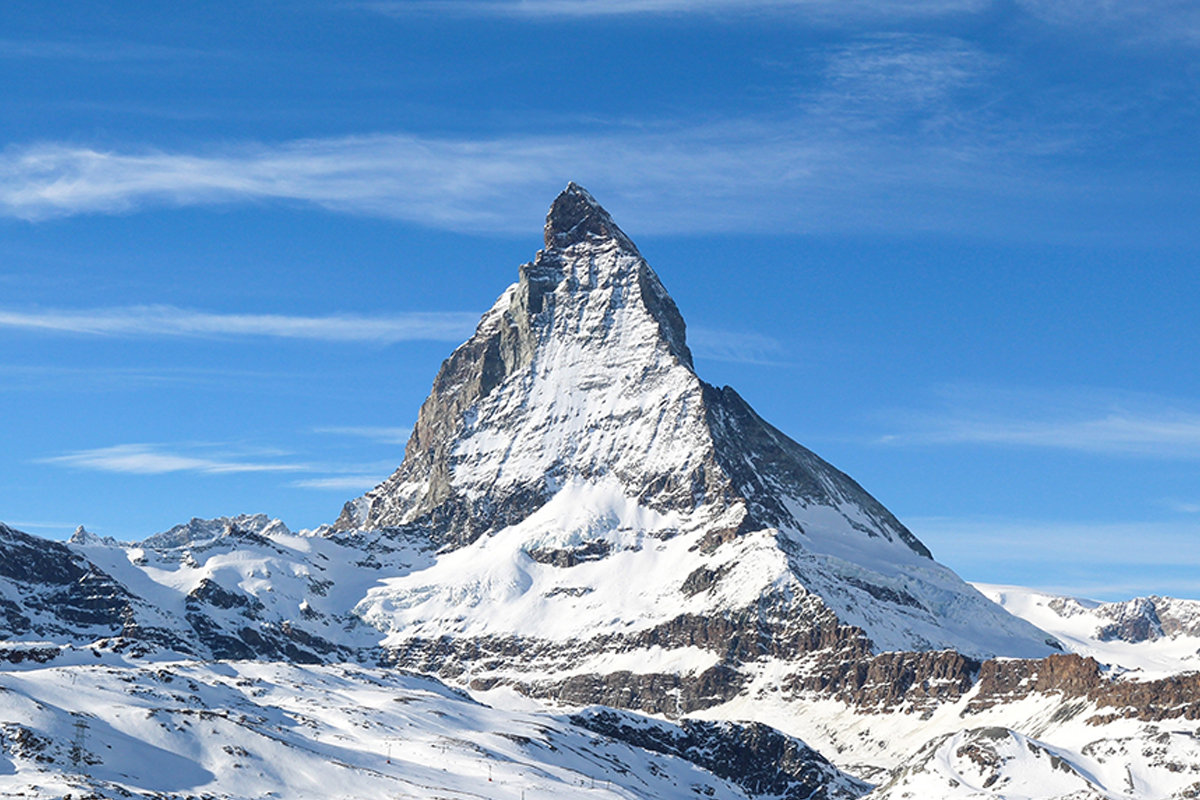After 37 years of mystery, the remains of a German mountaineer, who disappeared while trekking a glacier near the famous Matterhorn in Switzerland, have been uncovered due to glacial melting. This phenomenon continues to expose bodies and objects long assumed lost.
On July 12, climbers navigating the Theodul Glacier in Zermatt stumbled upon human remains and several pieces of equipment. The Valais canton police announced this discovery in a statement on Thursday.
A “DNA analysis confirmed the identity of a mountaineer who had been missing since 1986,” police stated. “A German hiker, who was 38 at the time, was reported missing in September 1986 after he failed to return from a hike.”
The climber was not found despite thorough searches in 1986, police said.
Forensic analysis was carried out on the remains at Valais Hospital, leading experts to link them to the 1986 missing case, police announced on Thursday.
The police did not reveal the identity of the German mountaineer or details surrounding his death.
The authorities shared a photograph showing a solitary hiking boot with red laces protruding from the snow and some of the equipment that belonged to the lost hiker.
With glaciers receding, alpinists who disappeared decades ago are increasingly being revealed, concluded the police in their statement.
This discovery follows recent scientific reports indicating that this month could be the hottest on Earth in approximately 120,000 years.
University of Innsbruck Glaciologist Lindsey Nicholson, in Austria, told CNN on Friday that climate change-induced glacier shrinkage has resulted in unearthing bodies of lost climbers.
Nicholson explained, “As glaciers pull back, any material – including people who have fallen into or onto them and subsequently got buried by snow – will emerge. All glaciers across the European Alps are melting rapidly and retreating.”
Long-lasting melting trend
In 2022, Swiss glaciers experienced their most severe melt rate in over a century, losing nearly double the previous 2003 record, amounting to 6% of their remaining volume, as reported by Reuters.
The 2022 melt exposed millennium-old bare rock at one site and enabled the recovery of bodies and even an aircraft lost in the Alps decades ago.
In 2015, two Japanese mountaineers who disappeared on the Matterhorn in a 1970 snowstorm were found, and their identities were verified through relatives’ DNA testing.
“The glaciers are facing a persistent melting trend,” noted Nicholson, highlighting that this trend, fueled by “low snow years,” is expected to persist.
“The diminished snow quantity is also partially linked to changing temperatures, as precipitation that might have fallen as snow now falls as rain. This doesn’t help the glaciers; rather, it works against them,” she added.
According to recent studies, even with aggressive climate action, up to half of the world’s glaciers could vanish by the century’s end.
Nicholson cautioned, “If our current emission levels persist, we’re facing a largely ice-free Alps for future generations – and that’s quite disheartening.”
Glacier disappearance will trigger a ripple effect. Glaciers are critical for supplying nearly 2 billion people fresh water and significantly contribute to rising sea levels.
Nicholson added, “Certain regions are more reliant on glaciers than here – potentially more vulnerable than the Alps.”
The exposure of these long-lost mountaineers is a haunting reminder of the rapid pace of global warming and its tangible consequences. Glacial melt not only means the loss of grand natural landscapes but also threatens water sources for billions of people and contributes to rising sea levels. As the plight of the glaciers continues to manifest, urgent action on climate change is needed to prevent future catastrophes and preserve the delicate balance of our planet’s ecosystems.







